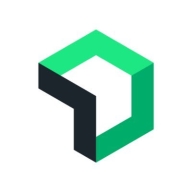


Find out what your peers are saying about Datadog, Dynatrace, Splunk and others in Application Performance Monitoring (APM) and Observability.
According to errors, exceptions, and code-level details related to their application performance on a daily basis, the application development team tries to help with Splunk AppDynamics to reduce errors and exceptions, which helps the end users get application availability and feel more confident.
To understand the magnitude of it, when the company asked to replace Splunk AppDynamics with another tool, I indicated that for the proposed tool, we would need five people to do the analysis that Splunk AppDynamics enables me to do.
It's very hard to find ROI because we are currently focused only on the on-premises applications.
Issues that could be solved quickly sometimes take longer because they go around in circles.
I have reached out to customer support multiple times for various cases, particularly for customization such as creating dashboards, and my experience has been good.
AppDynamics is much more helpful.
We got a contact, an account manager, to work directly with for technical support.
They help us resolve any issues raised by our team relating to operations, application instrumentation, or any other issues.
We have reached maximum capacity in our tier, and extending capacity has not been cost-effective from Splunk's perspective.
I would rate the scalability of Splunk AppDynamics as a nine out of ten.
I assess how Splunk AppDynamics scales with the growing needs of my organization as good, since we are growing and adding more servers.
It is necessary to conduct appropriate testing before deploying them in production to prevent potential outages.
There are no issues or bugs with the 20.4 version; it is very stable with no functionality or operational issues.
I can rate it nine out of ten.
Using real-time data, if there are any malicious patterns or something happening, they can identify those.
Email alert customization is limited; it cannot be tailored much, which makes the system more rigid than optimal.
New Relic can get pricey for larger organizations.
Splunk AppDynamics does not support the complete MELT framework, which includes metrics, events, logging, and tracing for the entire stack.
If AppDynamics could develop a means to monitor without an agent, it could significantly improve application performance and reduce potential problems.
A good integration with Splunk would be very interesting, as Splunk is a good product for logs, and that part is currently missing in Splunk AppDynamics.
We completed a three-year deal for Splunk and for AppDynamics, which costs millions of dollars.
Customers have to pay a premium price, however, they receive considerable value from the product.
All these solutions at the moment are cheap, but it is like paying for insurance; you pay insurance to avoid major damage.
Using New Relic speeds up troubleshooting and resolution, giving us a clearer picture of where issues are, thus saving time and effort.
The best features in New Relic include its numerous API integrations and a good source of support.
Another aspect I appreciate is its good alerting mechanism, which can throw alerts and can be configured with PagerDuty or Slack, allowing easy checks on triggers and troubleshooting using New Relic.
We have multiple tools, but end users prefer to use Splunk AppDynamics because their portal navigation is very simple and clear.
The feature that I appreciate in AppDynamics Browser Real-User Monitoring is the intuitive and user-friendly dynamic mapping it creates for workflows.
What I like the most about Splunk AppDynamics is the end-to-end observability for the application, along with traces.
| Product | Market Share (%) |
|---|---|
| Splunk AppDynamics | 4.0% |
| New Relic | 5.1% |
| LogicMonitor | 0.8% |
| Other | 90.1% |



| Company Size | Count |
|---|---|
| Small Business | 10 |
| Midsize Enterprise | 9 |
| Large Enterprise | 8 |
| Company Size | Count |
|---|---|
| Small Business | 65 |
| Midsize Enterprise | 50 |
| Large Enterprise | 61 |
| Company Size | Count |
|---|---|
| Small Business | 54 |
| Midsize Enterprise | 36 |
| Large Enterprise | 188 |
LogicMonitor offers flexible IT monitoring with customizable dashboards and robust alerting capabilities. It integrates seamlessly with third-party apps like ServiceNow and provides a single-pane view for diverse IT environments, aiding in proactive issue resolution and enhancing operational efficiency.
LogicMonitor stands out with its capability to monitor diverse infrastructures including Cisco Voice systems, data centers, and virtual environments. Supporting servers, storage, networking devices, and applications, it provides seamless integration with cloud services like AWS and Azure. Users leverage its scalability and flexibility, benefiting from dynamic thresholds, anomaly detection, and detailed visualization. All these features contribute to improved management of IT assets and streamlined operations. Users suggest improvements in mapping, reporting, and automation for remediation, desiring more customizations and an expansive application performance monitoring toolset.
What are LogicMonitor's key features?LogicMonitor is widely implemented across industries, providing monitoring for infrastructure in sectors like telecommunications, cloud computing, and managed services. Managed service providers particularly value its ability to track client environments, deliver proactive alerts, and generate comprehensive reports, while its integration with cloud platforms like AWS and Azure offers users centralized management and visibility into IT assets worldwide.
New Relic offers real-time application monitoring and insight into performance bottlenecks. Its customizable dashboards and APM integration provide efficient operational support, while server performance alerts ensure quick issue detection.
New Relic provides comprehensive monitoring of application performance, tracking bottlenecks across databases and front-end components. Users employ it for server and infrastructure monitoring, as well as analyzing key metrics such as CPU and memory usage. The solution's ability to integrate with tools like PagerDuty enhances incident management capabilities. However, users have expressed a need for improvements in query language simplicity, more detailed historical insights, and better mobile app monitoring support.
What are New Relic's most important features?In industries like e-commerce and financial services, New Relic supports application performance monitoring to enhance user experience and system reliability. Organizations leverage its insights for optimizing performance, particularly in server operations and infrastructure management. Its ability to monitor API failures through synthetic monitoring is crucial for maintaining high service levels.
Splunk AppDynamics enhances application performance monitoring with advanced diagnostics and real-time insights, offering seamless end-to-end transaction tracking and infrastructure visibility.
AppDynamics provides critical tools for businesses to analyze application behavior and performance. Through innovative features like transaction snapshot analysis and adaptable dashboards, users can quickly identify and address issues, ensuring high levels of system uptime and efficiency. It is designed to support complex environments including Kubernetes and AWS, enhancing user experience by detecting performance issues early. Despite needing improvements in network monitoring and integration, it remains a robust option for tracking application health.
What are the key features of AppDynamics?In industries like financial services and e-commerce, AppDynamics facilitates performance tracking across distributed systems, optimizing infrastructure to meet consumer demands. It excels in environments needing precise transaction monitoring and is pivotal in delivering high value and satisfaction.